|
|
 Jen Jen |
 |
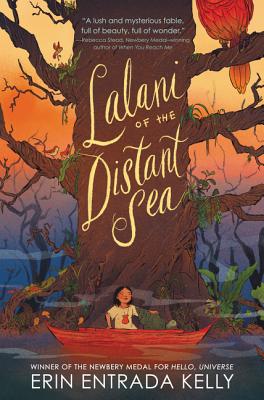
|
|
Lalani of the Distant Sea
Erin Entrada Kelly
Inspired by Filipino folklore, this middle grade fantasy takes readers on a quest journey with protagonist Lalani. After Lalani’s mother pricks her finger and becomes sick, Lalani must travel to Mount Isa, where one will find all of life’s good fortunes. Unfortunately, no one has ever survived a trip to Mount Isa. Interspersed with the usual third person narrative are nuggets of second person imaginings (with illustrations!) These sweep the novel along—ie: “Imagine you’re an exquisite eel. You are slender, long, and perpetually wet……………”
|
| |
|
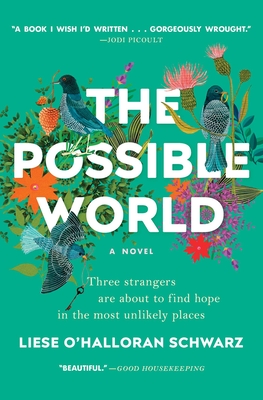 |
|
The Possible World
Liese O’Halloran Schwarz
The author of this novel, an ER doctor, has done an amazing thing – she has displayed her medical background/knowledge/expertise in the telling of this novel without boring the reader, losing the reader, or appearing to be showing off. She simply created a character (an ER doctor of all things) who seems 100% authentic. The novel weaves together three different narratives: Lucy, an ER doctor who attends to Ben, a 6-year old who is the only survivor of a brutal crime, and Clare, soon-to-be centenarian with long held secrets. This book is loaded with book group fodder! |
| |
|
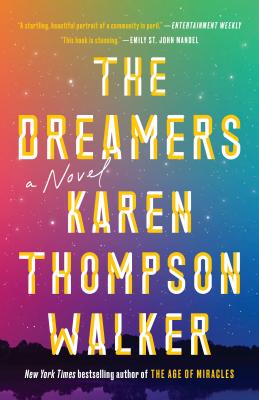 |
|
The Dreamers
Karen Thompson Walker
In this novel, students on a college campus begin to fall into a deep sleep from which they can’t be awakened. However, these sleepers display remarkably high levels of brain activity. They are dubbed “The Dreamers.” The condition is contagious and so the campus is quarantined. This works to contain the spread for a while, but of course, young college students are not easily confined. This novel has a surreal quality to it while still addressing life’s very real issues. |
| |
|
 |
|
Bowlaway
Elizabeth McCracken
This novel is quirky and thorough. It begins at the turn of the twentieth century with the discovery of an unconscious woman in a cemetery – her name is Bertha and either she doesn’t remember her past or doesn’t care to disclose it. She is revived by Dr. Leviticus Sprague, and so begins their life together in Salford, Massachusetts. Bertha establishes and runs a local bowling alley for candlepin bowling. The arc of the novel stretches over a long period of time (beyond Bertha’s lifetime) and is filled with wonderful and strange people and occurrences. Despite its quirkiness, it contains one of the wisest passages in writing I have ever encountered: “Her sister, Almira, wrote back, Now you will find out how sorrow shapes a life. But sorrow doesn’t shape your life. It knocks the shape out.” |
| |
|
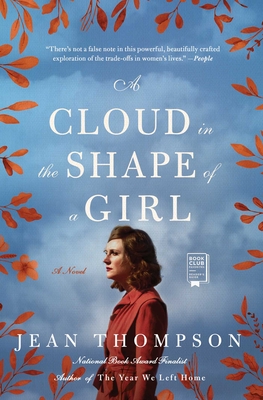
|
|
A Cloud in the Shape of a Girl
Jean Thompson
This novel spans three generations of women—Evelyn, Laura, and Grace. Evelyn’s resentment of motherhood is felt by her daughter Laura. In turn, Laura becomes a sort of “super-mom” and her own daughter, Grace, doesn’t quite live up to Laura’s expectations. Each woman is thoroughly examined and each is re-visited from the perspective of other characters. It’s a rich, full novel with a lot of issues to discuss. The time period of the novel is WWII to present-day. This would make a great mother-daughter or even grandmother-mother-daughter read. |
| |
|
|
|
|
|
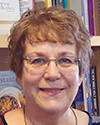 Sally Sally |
|
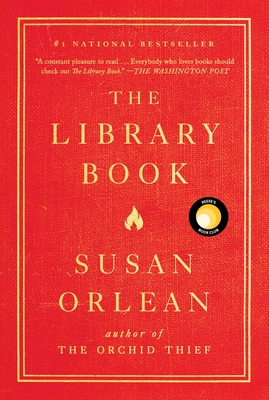
|
 |
The Library Book
Susan Orlean
You don’t have to know me very well to know that books and reading are my world, my life. It wasn’t always that way, however. I grew up in a home where most of the books were Readers Digest Condensed Books and my brother and I were rarely read to as children. This finally made more sense when, in her fifties, my mother’s dyslexia was diagnosed and she learned to read with a degree of proficiency. In the meantime, I found a home at the Hosmer Branch Library in south Minneapolis, which I continue to consider the best library on the planet.
You can see why I might gravitate to a book called, The Library Book. This is a work of non-fiction, on its surface about the Main Library in Los Angeles. A fire, presumed to be arson, wreaked havoc on the library in May of 1986. Author Susan Orlean does write about the fire, and about the man long suspected of setting it. But the book is so much more! If you like books which take you from point A to point B, this is not the book for you. But, if you enjoy all sorts of side excursions, you’ll want to read The Library Book.
In the aftermath of the fire, Orlean describes volunteers forming “a human chain, passing books hand over hand…through the smoky building and out the door…the people of Los Angeles forming a living library…a system to protect and pass along shared knowledge, to save what we know for each other, which is what libraries do every day.”
The book explores “what libraries do every day.” Stories are told of the directors of the library, of the way it came to be built, of the librarians who worked there and the tasks they do. It talks of the variety of materials contained in the library—certainly books, but also, a huge number of other things. For example, a recent exhibit included paper airplanes, gay bar matchbooks, and bird nests. Restaurant menus, sheet music, and patent applications are also found at the LA Library. Orlean also talks about how the library has changed and adapted over the years as society and technology have changed. She talks about how the library responds to homeless people who spend their days there.
In many ways, the book is a microcosm of libraries themselves. I found it to be a great read!
|
| |
|
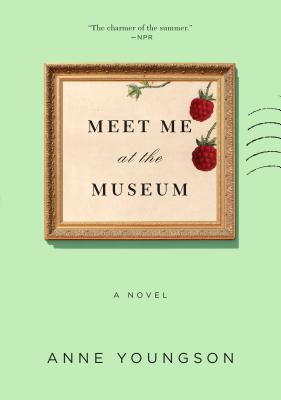 |
|
Meet Me at the Museum
Anne Youngson
Meet Me at the Museum slipped into the store under the radar. The paperback was released late in August, as summer book groups were winding down. It’s a great book for discussion, though, and I’m glad to have an opportunity to recommend it. The book is written entirely in letters, and it’s the correspondence between a curator at a museum in Denmark and an English farm wife. Tina Hopwood wrote to the museum after the death of her dear friend, Bella. The two women had always planned to visit the museum to see the exhibit of The Tollund Man, a perfectly preserved body from the fourth century BC, discovered in a peat bog in Denmark in the 1950s. Tina’s letter was answered by Kristian Larsen, a curator at the museum. Through letters and emails, the two began a correspondence which became meaningful to both of them. Over time, they became friends, sharing about their marriages, their children, and gradually, their innermost thoughts. This is a quiet, gentle book about the lives of two caring and thoughtful people. I came to care a great deal for Tina and Kristian. The ending of the book is open ended, and I have a strong opinion about what should come next! After you’ve read the book, let’s compare notes! |
| |
|
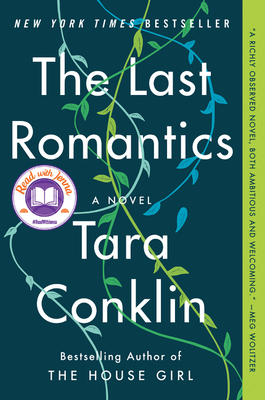 |
|
The Last Romantics
Tara Conklin
Imagine that you're seated in an auditorium, listening to a famous poet discuss her work. It's an event of note--the poet, Fiona Skinner, hasn't made a public appearance in 25 years. A thousand people are in the auditorium, and thousands more are watching via satellite. A young woman comes to the microphone and identifies herself as Luna. She was named after a woman in Skinner's most famous poem, and she wants to know if that Luna was a real person. It's a question Skinner has been asked many times, and she's refused to answer until now. This particular evening is in the year 2079. She's 102 years old, and she feels she can finally tell the story behind the poem. "Let me tell you a story," she says. "In these difficult times, stories are important. In a sense stories are all we have to tell us about the future." And Fiona Skinner proceeded to tell her life story. She was the youngest of four children. Their father unexpectedly died when Fiona was four years old, and their mother rarely left her bedroom for the next three years. The four children survived more or less on their own, and became incredibly close as a result. The story Fiona told is the story of their lives. The love they had for one another, and the struggles each of them had with the others. The Last Romantic is the name Fiona used for a blog she wrote in her twenties and thirties about her sexual encounters. Over her long, long life, she gradually realized there in nothing romantic about love, and we inevitably hurt those we love. But yet, what do we have but love and stories? The book is a great story about four distinct personalities. Their relationships will raise all sorts of interesting questions for discussion
Lately, I’ve seen this book mentioned frequently on book group pages on line. People seem to either really like the book or to really dislike it. Books like that generally spark great discussion in book groups. Give it a try in your group!
|
| |
|
 |
|
The Braid
Laetitia Colombani
In my top dresser drawer is a ring which is a lovely opal in an ugly setting. It belonged to my husband's aunt, and it's way too small for me to wear. Still, I like to take it out every once in a while. I remember Bob's aunt and the close relationship they had, and I wonder who else has worn the ring. Aunt Sophie has been dead for many years now, so I'll never know the story of her ring.
The Braid is the story of three women and the way their lives are braided together by an object. That object isn't revealed until the end of the book. Although you may guess it before it is revealed, that won't affect the power of the story. The three women are Smita, an Untouchable who lives in India, Her job is to empty latrines with her bare hands. She wants her daughter to have a different life than she has had, and she runs away with the little girl. Giulia works in her father's business, which is making wigs from human hair. Sarah is a high powered lawyer in Canada. Her life and her sense of self are grounded in her work. And then she learns she has breast cancer.
The stories of these three women are braided together. The structure of the book is that there is a chapter about each of them, and this is repeated throughout the book.
Although the three women don't know each other, each deals with challenges which are similar to the other two. The book is lovely and simple, with much to ponder and discuss.
The author is French, so the book has an international sensibility. The author's background is film. She's a screenwriter, director, and actress, and that background influences the way the story is told. The book is translated, and it's quite well done. This book will particularly appeal to readers who are interested in women's issues.
|
| |
|
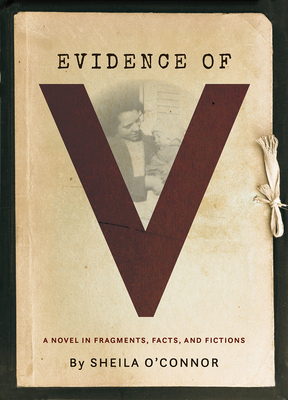 |
|
The Evidence of V
Sheila O’Connor
A number of years ago, I took my mother to Brainerd for the funeral of a family friend. When we left the cemetery, my mother directed me to drive on city streets to get back to the highway. As we were going down one street, my mother pointed to a big white house on a corner and said, “That’s where your grandmother grew up.” What?! I pulled the car to the curb and took a good long look. I was pretty put out with my mother—I’d been very close to my grandmother and couldn’t believe I’d never before seen this house. When I read Evidence of V, I realized how petulant my reaction to seeing my grandmother’s childhood home had been.
When Sheila O’Connor set out to learn about her grandmother, she had no information to go on, no relationship, no stories, nothing. At sixteen, she’d figured out that her mother was adopted, a closely held family secret. Years later, she and her mother began the search for her mother’s mother. What they learned is contained in Evidence of V. Information about the missing grandmother was fragmentary, but O’Connor’s research revealed the little known practice in Minnesota and elsewhere, of institutionalizing teen-age girls for being sexually active. When her grandmother was a pregnant fifteen year-old, she was sentenced to six years in a state school in Sauk Center. Soon after the birth of her child, Sheila’s mother, the baby was taken from her and placed with an adoptive family.
O’Connor couldn’t find enough hard information about her grandmother, whom she calls “V,” to write a biography. She also didn’t have enough information to write a conventional novel. She chose instead to write an unconventional book, as the subtitle says, “A Novel in Fragments, Facts, and Fictions.” The book includes information about the dynamics of O’Connor’s family of origin, the small amount of information she found about V from court records, information about Minneapolis in the 30’s, poetry, and the ways young women were adjudicated in that period. It’s a novel of great power, and I’m thrilled that it’s been short-listed for the Minnesota Book Award in fiction. We hope to have Sheila at the store this summer, and Headwaters Center for Lifelong Learning is talking to her about giving her presentation about the issues raised in the book. Please read it and take advantage of these opportunities to learn more about the back story of this remarkable book. |
| |
|
|
|
|
|
| |
|
|
|
|
 Ann
Ann |
|

|
|
Overstory
Richard Powers
Overstory is a novel filled with connections. Characters who are introduced separately come together through their mutual connections with trees. Decisions regarding trees and the desire to protect them have serious consequences in the characters' personal lives. Powers portrays the trees as connected to each other, the ecosystem, and the planet. Overstory is filled with thought provoking ideas and discussion topics. It is likely to increase your awareness of trees and their importance.
|
| |
|
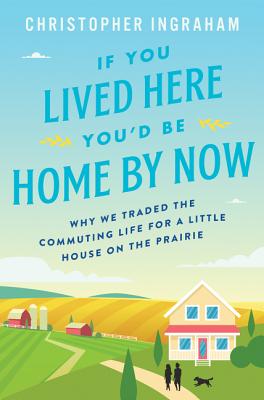
|
|
If You Lived Here You'd Be Home By Now
Christopher Ingraham
Christopher Ingraham is a data reporter for the Washington Post and is known for declaring Red Lake County, Minnesota to be "the absolutely worst place to live in America.”
The citizens of Red Lake County were outraged and challenged Ingraham to come and check out Red Lake County for himself. Ingraham made that visit. In fact, he and his wife decided to move their twin pre-school sons to Red Lake County and make it their home. Being a data guy, Ingraham's story is filled with statistical information comparing life in Red Lake County to the family's former life in suburban Washington, D.C. The family's adjustment is described in a way that is honest, funny, and sometimes heartwarming. Wherever you live, you this book might make you less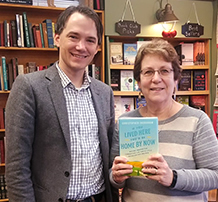 likely to take the positive aspects of your city or hometown for granted. likely to take the positive aspects of your city or hometown for granted.
Christopher Ingraham and Sally the day he was in the store for an event.
|
| |
|
|
|
|
|

Bob |
|
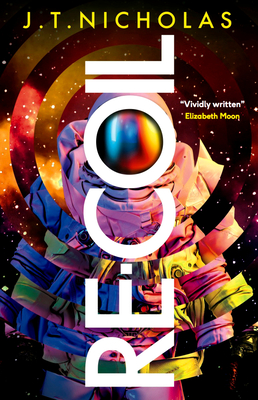
|
|
Recoil
J.T. Nicholas
Wow, I really enjoyed this book! I was back in my element reading Sci-Fi again, and what a notable book to get back into it. The author has really thought through all the problems of space travel, non-earth habitats, artificial body parts (and bodies) and more. Best of all, immortality by transferring consciousness into a new body!
Carter, a deep-space salvage expert, “comes back” after a job goes horribly wrong. While checking out his new coil (you remember a “mortal coil” from Hamlet) he quickly discovers someone is trying to assassinate him. He finds that part of his last salvage crew has been eliminated but luckily, at least one is still alive. The one alive he locates is in hiding, also with a new coil, but of an alternate sex. Together they try to figure out what went wrong on their salvage operation and why they are being targeted.
A great combination of Star Trek and Star Wars with all the “loose-ends” tied up. Everyone who’s into Sci-Fi should read this book.
Note: this book will be released March 3, and may be preordered from our online store.
|
| |
|
|
|
|
|

Gail |
|
 |
|
|
| |

|
|
The Dutch House
Ann Patchett
The Dutch House is the main character in this unusual story. Cyril Conroy rises from poverty to wealth in the real estate business. As soon as he can, he buys the Dutch House, a magnificent mansion in Philadelphia. The story is told by his son, Danny, which is unusual as it seems women are the usual story tellers. 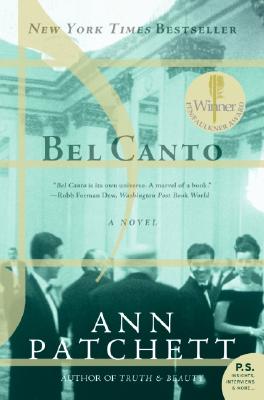 Danny's stepmother throws him and his sister, Maeve, out after their father dies, plunging them back into poverty. Danny and Maeve have only themselves to count on. The Dutch House continues to tantalize them while their story unfolds. Finally, the house comes back to its rightful owner, which will be a surprise to the reader. The author has written seven novels. Bel Canto was my favorite, and I recommend it. It's an entirely different type of story but also keeps you reading to the end to find out what will happen. Danny's stepmother throws him and his sister, Maeve, out after their father dies, plunging them back into poverty. Danny and Maeve have only themselves to count on. The Dutch House continues to tantalize them while their story unfolds. Finally, the house comes back to its rightful owner, which will be a surprise to the reader. The author has written seven novels. Bel Canto was my favorite, and I recommend it. It's an entirely different type of story but also keeps you reading to the end to find out what will happen. |
| |
|
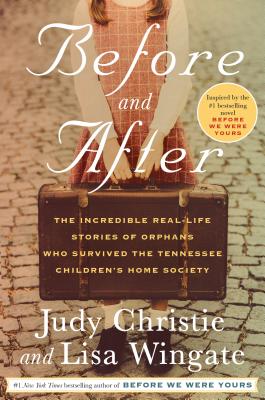
|
|
Before and After
Lisa Wingate and Judy Christie
If you enjoyed Before We Were Yours by Lisa Wingate, this is a must read. Before and After tells stories of real people that were a part of Georgia Tann's black-market baby business in Tennessee. Many of these people or their relatives are searching for their biological families. The authors arrange a reunion so people could come to tell their stories. Some had very good lives but still have a longing to know who their real families are. What a joy for some to reunite with their siblings! This is history that touches the heart. |
| |
|

|
|
The Dry
Jane Harper
Federal agent Aaron Falk has not been back to his hometown since he and his father were run out 20 years ago. Now he has received a note from his best friend's father: "Luke lied. You lied. Be at the funeral.” Luke supposedly has committed suicide after killing his wife and son. Luke's parents think otherwise and implore Aaron to find out what really happened. The story is set in Australia during a drought, which fits in with current news of fires there. People in the whole area, townspeople and ranchers alike, are going broke so there are lots of suspects—but why? Aaron and Luke are also suspected of having something to do with a young girl’s death. She was found in the river with stones weighing down her pockets. Lots of red herrings are thrown out to keep the reader guessing until the end.
|
| |
|
|
|
|
|
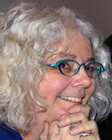
Hannah |
|
 |
|
|
|
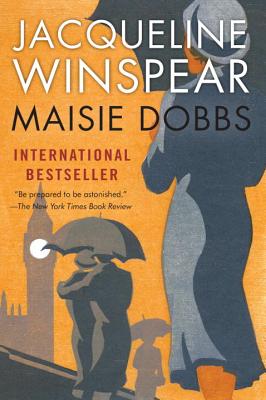
|
|
Maisie Dobbs
Jacqueline Winspear
Yes, this is a detective story, the first in a series. But it feels more like a literary novel. Maisie Dobbs comes from a working-class family in London. When she loses her mother, she has to quit school to become a maid in an aristocrat’s house. She gets caught sneaking into the library to read at night. I won’t tell you how that goes, but she does become a nurse in The Great War. She sets up as a detective in 1929 (making her a contemporary of Josephine Baker and the “Gentleman” in Moscow). I love the way Dobbs mimics the posture of people to figure out what they’re feeling. I can’t imagine what the next book in this series will be like: but I’ll find out soon!
After I finished this I saw the film 1917. It’s quite a juxtaposition. |
| |
|
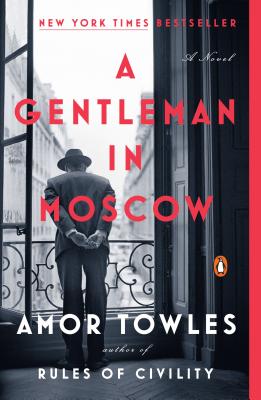
|
|
A Gentleman in Moscow
Amor Towles
An aristocrat is spared the firing squad but sentenced to never set foot outside of the Metropol Hotel near the Kremlin. At first I thought this was a book about how charm and attitude can allow a person to adapt and thrive in awful circumstances. It is this, but it’s much more. It’s about Russian culture and history, and the importance of friends and family. It’s also a finely plotted drama. Towles sets out to “explore the narrow border between the unbelievably actual and the convincingly imagined.” He succeeds so well in mixing actual events with fiction that I went to his website to suss it out.
Finally, the book is full of delightful sentences. I shall keep it to read again. Kenneth Branaugh is working on a limited series television series. I look forward to seeing it, but I recommend that you read the book first.
|
| |
|

|
|
Josephine Baker’s Last Dance
Sherry Jones
Here’s another take at the same period. I can’t say that I was convinced that I had met the real Josephine Baker in this book, but good heavens what a life she led! I knew she was the toast of Paris in the post-WWI era, but I had no idea how rough her life was, nor how important she was during the Nazi occupation, nor that she was active back in the civil rights struggles in America. Her heartbreaking childhood and her incredible energy took her to places no one else went, from dancing in nothing but a skirt made of fake bananas, to being incredibly rich, to being almost forgotten. Her last dance in Paris was in 1975, and is the organizing motif for the book. |
| |
|
|
|
|
|
| |
|
|
|
|

Tim
|
|

|
|
Invented Lives
Andrea Goldsmith
Jen suggested this book to me and I loved it. Here's an author who is 'generous' with her development of characters who are flawed, but understandable and lovable just the same. Most often, an author will fully develop only one character, using others to support the story as it relates to that main character. In Invented Lives, Goldsmith introduces four people whom the reader becomes involved with, right alongside their becoming involved with one another. Believable, sympathetic, and understandable, all of them. My best description of Goldsmith's offering here is again "generous,” both in her storytelling and her skill in understanding people.
|
| |
|
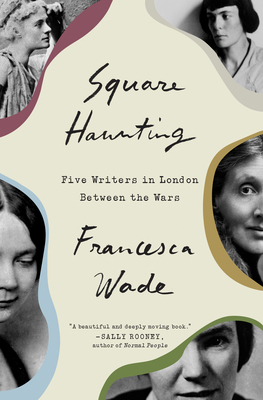
|
|
Square Haunting
Francesca Wade
Hilda Doolittle
Dorothy L. Sayers
Jane Ellen Harrison
Eileen Powers
Virginia Woolf
Some of these names you might know, some you might not have heard of before, but all are women of note. All were writers, scholars, and thinkers in the inter-war years (1919–1940), struggling to establish themselves as credible independent women. The common thread in the book is that they all lived around Mecklenberg Square, Bloomsbury, London. Interestingly Dorothy L. Sayers, moved into the vacated rooms of Jane Ellen Harrison, though I don't think they knew one another. The book explores the struggles these women had in common, in achieving financial independence along with a reputation at a time when such things, we take for granted, were looked on as disreputable, maybe even deviant. What most impressed me was Wade's skill in explaining the subtle differences/interests in the writing of these women. The book has: History, Biography, Literary Criticism and Political/Social Commentary.... a seriously good read.
Note: the book will be released on April 7.
It may be preordered from our online store.
|
| |
|
|
|
|
|
Would you like to be a guest reviewer?
Email Sally at sally@beagleandwolf.com |
| |
|
|
|
|
|
— page top —
|
|

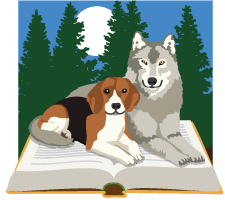

 Jen
Jen




 Sally
Sally




 Ann
Ann














 likely to take the positive aspects of your city or hometown for granted.
likely to take the positive aspects of your city or hometown for granted. Danny's stepmother throws him and his sister, Maeve, out after their father dies, plunging them back into poverty. Danny and Maeve have only themselves to count on. The Dutch House continues to tantalize them while their story unfolds. Finally, the house comes back to its rightful owner, which will be a surprise to the reader. The author has written seven novels. Bel Canto was my favorite, and I recommend it. It's an entirely different type of story but also keeps you reading to the end to find out what will happen.
Danny's stepmother throws him and his sister, Maeve, out after their father dies, plunging them back into poverty. Danny and Maeve have only themselves to count on. The Dutch House continues to tantalize them while their story unfolds. Finally, the house comes back to its rightful owner, which will be a surprise to the reader. The author has written seven novels. Bel Canto was my favorite, and I recommend it. It's an entirely different type of story but also keeps you reading to the end to find out what will happen. 